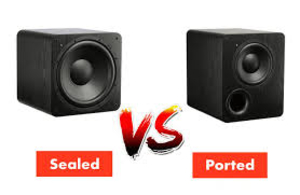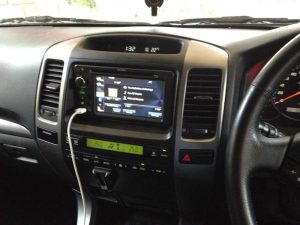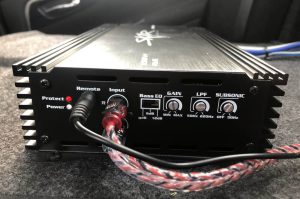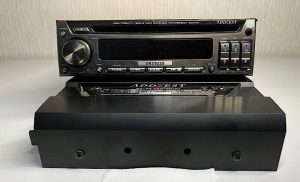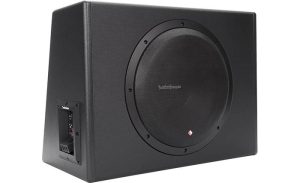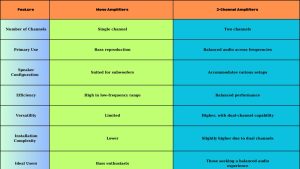When it comes to upgrading your car stereo system with a subwoofer, one of the fundamental decisions you’ll need to make is whether to go for a sealed or ported enclosure. Both types have their own set of advantages and trade-offs, catering to different preferences and requirements. In this article, we’ll explore the sealed vs ported subwoofer, share personal experiences, and provide insights to help you decide which option might be the best fit for your car audio setup.
Subwoofers are crucial components for enhancing the low-frequency sound reproduction in car audio systems. Sealed and ported enclosures are the two primary designs used to house subwoofers, each affecting the sound characteristics in distinct ways. Before delving deeper, let’s take a quick look at the key differences between sealed and ported subwoofers:
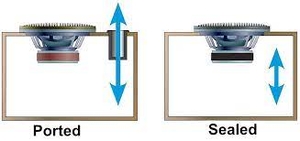
| Aspect | Sealed Subwoofers | Ported Subwoofers |
| Sound Quality | Typically provides tighter, more controlled bass | Can produce louder, boomy bass with more resonance |
| Enclosure Design | Completely airtight enclosure | Features a vent or port for air movement |
| Size and Weight | Generally more compact and lighter | Often larger and heavier, requiring more space |
| Power Handling | Typically handle power more efficiently | May require more power for optimal performance |
| Musical Accuracy | Known for delivering accurate, precise bass reproduction | May sacrifice some accuracy for increased volume |
| Installation | Versatile and can fit into smaller spaces | Requires proper tuning and may be less forgiving |
Now, let’s explore both types in more detail.
Exploring Sealed Subwoofers
Sealed subwoofers are housed in a completely airtight enclosure, which means there are no ports or vents for air to escape. This design offers several advantages, including precise bass reproduction and a smaller footprint.

Definition and Construction
Sealed enclosures are designed to provide tight and accurate bass response. The sealed design ensures that the air pressure inside the enclosure remains constant, allowing the subwoofer to respond quickly to changes in the audio signal. These enclosures are typically constructed with dense, non-resonant materials to minimize vibrations and coloration of sound.
Personal Experience
As a user of sealed subwoofers, I have appreciated the clarity and accuracy they offer in reproducing bass frequencies. The tight, controlled bass adds depth to the overall sound without overpowering other frequencies. Whether I’m listening to hip-hop, rock, or electronic music, the sealed enclosure ensures that each bass note is articulate and well-defined.
Pros and Cons
| Aspect | Sealed Subwoofers |
| Pros | – Tight and accurate bass reproduction |
| – Compact size and versatile installation | |
| – Efficient power handling | |
| Cons | – May lack the booming bass of ported enclosures |
| – Limited output compared to ported designs | |
| – Requires more power for achieving louder volumes |
Delving into Ported Subwoofers
Ported subwoofers, on the other hand, utilize a vent or port in the enclosure to allow air to move in and out. This design can result in louder and more resonant bass, though it may sacrifice some precision in favor of increased volume.
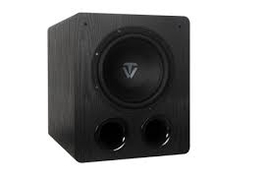
Definition and Construction
Ported enclosures are engineered to enhance the bass output of the subwoofer by utilizing the resonance of the enclosed airspace. The ported design allows for more efficient air movement, resulting in increased bass output compared to sealed enclosures. These enclosures often require careful tuning to achieve optimal performance and prevent unwanted distortion.
Personal Experience
Having experimented with ported subwoofers, I’ve found that they excel in producing deep, booming bass that’s perfect for genres like rap, EDM, and reggae. The ported design enhances the low-frequency response, creating a visceral listening experience that can be felt as much as heard. However, I’ve also noticed that ported enclosures can be more sensitive to placement and tuning, requiring additional attention to achieve the desired sound quality.
Pros and Cons
| Aspect | Ported Subwoofers |
| Pros | – Louder, more resonant bass output |
| – Enhanced low-frequency response for certain music genres | |
| – Can achieve deeper bass compared to sealed enclosures | |
| Cons | – Larger and heavier, requiring more space in the vehicle |
| – May sacrifice some accuracy and tightness in bass | |
| – Requires careful tuning to prevent distortion |
Comparing Performance
Now that we’ve explored the characteristics of sealed and ported subwoofers, let’s compare their performance in various aspects:
Sound Quality
Sealed subwoofers are renowned for their tight and accurate bass reproduction, making them ideal for music genres that demand precision and clarity. On the other hand, ported subwoofers excel in producing louder, more resonant bass, which can enhance the listening experience for certain genres like hip-hop, electronic, and reggae.
Output and Efficiency
Ported enclosures generally produce higher output levels compared to sealed enclosures, thanks to their ability to utilize resonance for increased bass response. However, sealed enclosures are often more efficient in handling power, making them suitable for applications where space and power constraints are a concern.
Suitability for Different Music Genres and Vehicle Types
The choice between sealed and ported subwoofers may also depend on the type of music you listen to and the size of your vehicle. Sealed enclosures are versatile and can fit into smaller spaces, making them suitable for compact cars or installations where space is limited. Ported enclosures, on the other hand, are better suited for larger vehicles or applications where maximum bass output is desired.
Conclusion
In the debate between sealed and ported subwoofers, there’s no one-size-fits-all answer. Each type offers its own set of advantages and trade-offs, catering to different preferences and requirements. If you prioritize accuracy and precision in bass reproduction, a sealed subwoofer may be the perfect choice for you. However, if you crave deep, booming bass that can fill a larger space, a ported subwoofer might be more suitable. Ultimately, the decision comes down to personal preference, music taste, and the specific characteristics of your car audio system. By understanding the differences between sealed and ported subwoofers, you can make an informed choice that brings out the best in your car stereo setup.
